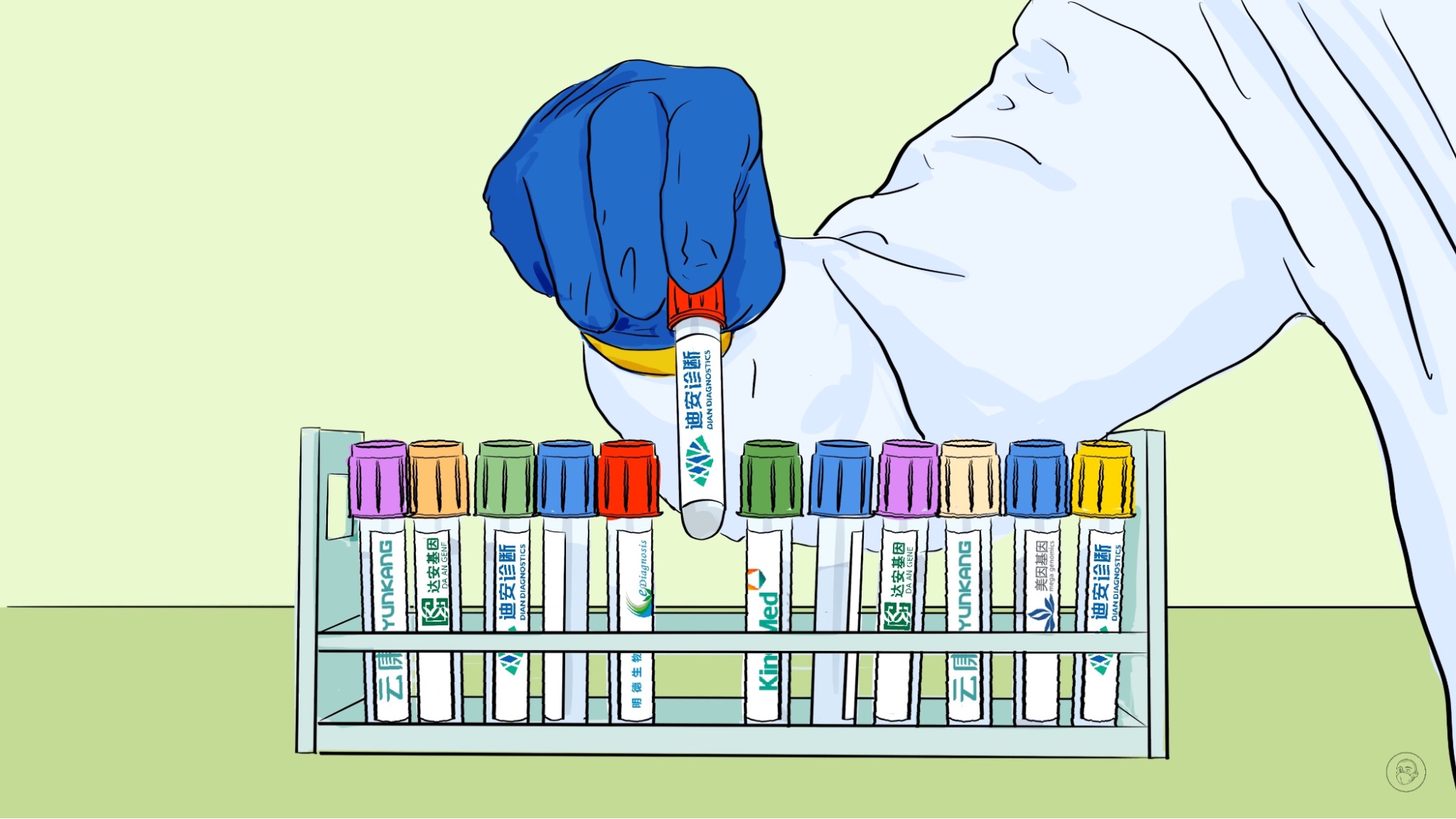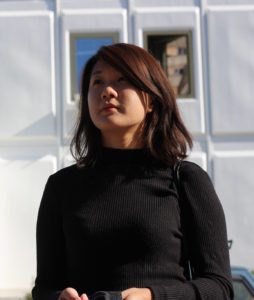No more easy money from mass testing despite COVID zero
COVID testing companies in China pocketed billions of yuan in the first half of 2022, but the big bucks that have lured many newcomers to enter the market may end soon, as Beijing has imposed price caps for testing.

China is spending a fortune on COVID testing. Analysts at Soochow Securities 东吴证券 estimated that local governments spent 174.6 billion yuan ($24.3 billion) on conducting 10.8 billion tests from April to June this year. In another research note (which has since been censored in mainland China), they estimated that China is spending as much as 1.45 trillion yuan ($202 billion) on testing a year, assuming that 505 million people in big cities take a COVID test every 48 hours.
“We previously estimated that regular/mass COVID-19 screening can cost between 94 billion yuan ($13 billion) and 398 billion yuan ($55 billion) in 2022 alone, with most of the costs borne by local governments. The expenditure — and by extension the industry it creates — is significant, but not egregious,” Chim Lee, an analyst at Economist Intelligence Unit, told The China Project.

The amount of money China has spent on testing is jaw-dropping compared with other countries, which instead rely on effective vaccines to fight COVID-19. The U.S. has invested over $24 billion to offer free COVID tests to selected groups, while Germany spent over €3.7 billion ($3.6 billion) in 2021, and has since phased out free tests.
“Mass testing is a key component of sustaining the COVID-zero policy, but it is also extremely expensive,” Ben Cowling, an epidemiologist at the University of Hong Kong, told The China Project.
COVID testing has become part of life in China, where people can be denied access to anything without a test result within 48 to 72 hours. Requirements vary drastically across the country and sometimes even in the same city, and they can change at a moment’s notice.
The sheer demand for COVID testing, coupled with Beijing’s ambition to make tests available within a 15-minute walk anywhere in big cities, could mean up to 280,000 testing booths across the country’s urban areas, an analyst at Huaan Securities 华安证券 has estimated.
He added that making COVID tests routine nationwide is bolstering a new sector: nucleic acid testing infrastructure and equipment. As there are already at least five robots on the market to aid nucleic acid testing, he believes robot developers and algorithm solution providers could benefit from this trend.
A big testing pie
It remains to be seen how much these new players can grab in a market where test kit makers and testing service providers have already reaped millions, if not billions, of yuan.
These companies sell testing products and services to local governments, private hospitals, companies, and individuals. What they offer are usually polymerase chain reaction (PCR) tests, which are nucleic acid based, with samples collected through nasal or oral swabs and tested at a laboratory.
Antigen tests, which are less sensitive but deliver faster results, are less common. Beijing prefers PCR tests and regards them as the gold standard for diagnosing COVID-19: Though China also allows the use of the antigen tests, Beijing makes clear that only PCR test results count. Antigen tests are only supplementary.
The top three independent clinical laboratories (ICL) that provide COVID testing services have collectively pocketed over 7 billion yuan ($1 billion) in net profit in the first half of 2022.
- KingMed Diagnostics 金域医学, which offers COVID tests in 31 provinces, saw its net profit increase by 55% to 1.6 billion yuan ($223 million).
- Daan Gene’s 达安基因 net profit soared by 125% to 3.6 billion yuan ($502 million) — a stark contrast to less than 1 billion yuan ($140 million) in 2019 — thanks to the strong demand for its PCR test kits and devices.
- Dian Diagnostics’ 迪安诊断 revenue amounted to 4.75 billion yuan ($663 million), nearly 70% of which was from its diagnostic testing business, by conducting over 150 million COVID tests throughout 30 provinces and regions. Its net profits amounted to 1.9 billion yuan ($265 million), an increase of 159% year-on-year.
A lesser-known player, EasyDiagnosis 明德生物 from Wuhan, surprised the market the most with a 376% jump in net profit to 2.8 billion yuan ($391 million). Its COVID test kits brought in over 3 billion yuan ($419 million) in revenue, up 270% year-on-year. The revenue of its testing service also skyrocketed by 557%.
COVID testing also represented a comeback opportunity for some companies.
- Mega Genomics 美因基因, which launched an IPO in Hong Kong in June, said the COVID-19 pandemic “has had a positive impact” on its financial performance, and revenue from COVID testing services partially compensated for the decrease in revenue from other types of consumer genetic testing services.
- Yunkang Group 云康集团, also listed in Hong Kong, said COVID tests have accounted for a significant share of its revenue since 2020, the year it started to turn a profit.
- More newcomers have flooded the sector: Beijing Chaoan Medical Laboratory 北京朝安医学检验所, for example, won a government contract to provide mass testing two weeks after its establishment on April 26, sparking public outcry and concern over the lucrative business.
China news, weekly.
Sign up for The China Project’s weekly newsletter, our free roundup of the most important China stories.
Price caps
The feast for testing companies may continue, as Beijing has reiterated its COVID-zero approach ahead of the 20th Party Congress that started on October 16.
Andy Chen, a senior analyst at Trivium China, told The China Project that the COVID-zero policy “is not getting relaxed in any meaningful way.”
“Heading into an important political event, the leadership cannot tolerate the level of uncertainty — including infection rates, death numbers, hospital overruns, and related social instability — associated with relaxing the COVID-zero strategy,” he explained, adding that the policy “is here to stay well into 2023.”
But EIU’s Lee said businesses involved in mass testing are not quite profiting from it at the moment.
“Two major factors are at play here: Health authorities have set guidance prices for testing, thus limiting profitability of PCR tests; on the other hand, local governments, which are under huge financial stress, could delay payments to providers of testing materials and services,” he explained.
On May 25, the National Healthcare Security Administration put caps on COVID test prices for the fifth time since January 2021. Pooled tests, where multiple samples are tested together, must not cost more than 3.5 yuan ($0.49) per person, while individual tests must cost no more than 16 yuan ($2.23). Pooled and individual tests were once capped at as much as 15 yuan ($2) and 80 yuan ($11), respectively.
This prompted testing companies to slash their prices to win government contracts. In Guangzhou, 16 companies have voluntarily dropped prices by as much as 57% for their test kits.
Before the price caps, a government crackdown on testing companies for poor quality control was already in full swing. At least 40 testing companies and institutions have been suspended, and nearly 350 have been ordered to rectify their operations.
Windfalls from COVID testing could come to an end soon. In its interim report, Yunkang Group 云康集团 attributed its sliding gross profit margin in the first half of 2022 to “the decrease of the average unit price of COVID-19 tests.” Frost & Sullivan also estimated that the CAGR of China’s ICL market has dropped from 27.2% in 2016–2020 to 9.3% in 2020–2025.
As of 2021, there were over 1,800 ICLs in China trying to grab a share of the market, but not many will stick around. KingMed 金域医学 has stated that as COVID test prices are gradually dropping, smaller ICLs with a single technology will fade out and the industry is expected to be further consolidated.
The risk of bad debt is also lingering. “On paper, leading service providers recorded 50–350% of year-on-year profit growth in the first half of 2022. But in reality, they see a massive surge in accounts receivable, some of which are written off as bad debts,” said Lee. “This suggests difficulties and delays in collecting payments from their clients.”
An uncertain future
For those companies that manage to stay afloat, whether after industry consolidation or the unlikely end of the COVID-zero policy, it will be business as usual, as they already offer other types of tests to diversify their income source. Cases in point include KingMed, Daan Gene, and Dian Diagnostics.
Should other public health crises emerge in the future, many speculate whether Beijing will again stick to mass testing as an essential strategy.
“The apparatus [China has] constructed, I fear, will likely be used in future infectious disease outbreaks regardless of what the conditions call for,” Amesh Adalja, a senior scholar at Johns Hopkins Center for Health Security, told The China Project.
But Cowling, from HKU, doubts that the infrastructure currently in place for mass testing in China will be useful in other public health crises.
“The cost of repeated universal testing is likely to be too high,” he explained.






